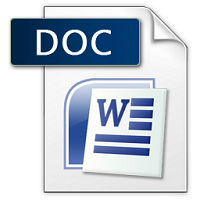₹198.00
Scroll down for Match your questions with Sample
Note- Students need to make Changes before uploading for Avoid similarity issue in turnitin.
Another Option
UNIQUE ASSIGNMENT
0-20% Similarity in turnitin
Price is 700 per assignment
Unique assignment buy via WhatsApp 8755555879
Description
| SESSION | AUGUST 2023 |
| PROGRAM | MASTER OF COMPUTER APPLICATIONS (MCA) |
| SEMESTER | I |
| COURSE CODE & NAME | DCA6105 – COMPUTER ARCHITECTURE |
SET-I
- (a) Explain different generations of computer system.
(b) What are the differences between concurrent and parallel execution? 5+5
Ans 1.
Different generations of computer system
- The evolution of computer systems has been marked by distinct generations, each characterized by significant technological advancements that have revolutionized the way computers operate and interact with users. This progression can be categorized into various generations of computer systems.
First Generation (1940s – 1950s)
Its Half solved only
Buy Complete from our online store
https://smuassignment.in/online-store/
MUJ Fully solved assignment available for session SEPT 2023.
Lowest price guarantee with quality.
Charges INR 198 only per assignment. For more information you can get via mail or Whats app also
Mail id is aapkieducation@gmail.com
Our website www.smuassignment.in
After mail, we will reply you instant or maximum
1 hour.
Otherwise you can also contact on our
whatsapp no 8791490301.
- (a) Explain zero, one, two and three address instruction with the help of given instruction X=(A/B)+(C*D)
(b) Discuss different types of addressing modes in detail. 5+5
Ans 2.
- Zero, One, Two, and Three Address Instructions
Zero Address Instructions Zero address instructions are typically used in stack-based architectures. In these architectures, operations are performed on the top elements of the stack. For example, considering the expression X = (A/B) + (C*D), a zero-address instruction set would push A, B, C, and D onto the stack. Operations like division and multiplication would then occur at the top of the stack, and the results would be stored back on the stack. Finally, an addition operation
3.(a) Explain different types of techniques to handle hazards in pipelining.
(b) Differentiate between unconditional and conditional branch.
Ans 3.
- Pipelining is a fundamental concept in computer architecture, used to increase the throughput of a processor. Hazards in pipelining are scenarios where the next instruction cannot execute in the following cycle, leading to performance inefficiencies. Handling these hazards is crucial for maintaining the efficiency of a pipelined
SET-II
4.(a) What is mapping? Explain different types of mapping in detail.
(b) What are vector processors? Explain different types of vector processing.
Ans 4.
Mapping
- Mapping is a fundamental concept in various fields such as geography, computer science, and data analysis. It involves creating a representation of an area or a set of data, where specific elements or points correspond to real-world or conceptual locations.
Geographical Mapping: This is the most
5.(a) Explain fine-grained and coarse-grained architecture. Discuss differences between them.
(b) Explain the different types of Storage devices. 5+5
Ans 5.
- Fine-Grained vs. Coarse-Grained Architecture
Fine-Grained Architecture
Fine-grained architecture refers to a design approach where system components are broken down into smaller, more specific parts. This granularity allows for a high degree of modularity and flexibility. In fine-grained architectures, each component is focused on a single, narrowly defined responsibility or task. This leads to systems that are easier to understand, test, and maintain on a component level. The microservices architecture is a prime example of fine-grained architecture, where each microservice is responsible for a specific, small part of the
6.(a) What is RAID? Explain RAID0,RAID1, RAID3 and RAID5.
(b) What is multithreading? Explain its advantages.
Ans 6.
RAID
RAID, which stands for Redundant Array of Independent Disks, is a method for storing data across multiple hard disk drives to achieve redundancy, performance improvement, or both. It combines multiple physical disk drive components into a single logical unit, where data is distributed across the drives in one of several ways, referred to as RAID levels.
RAID 0 –


